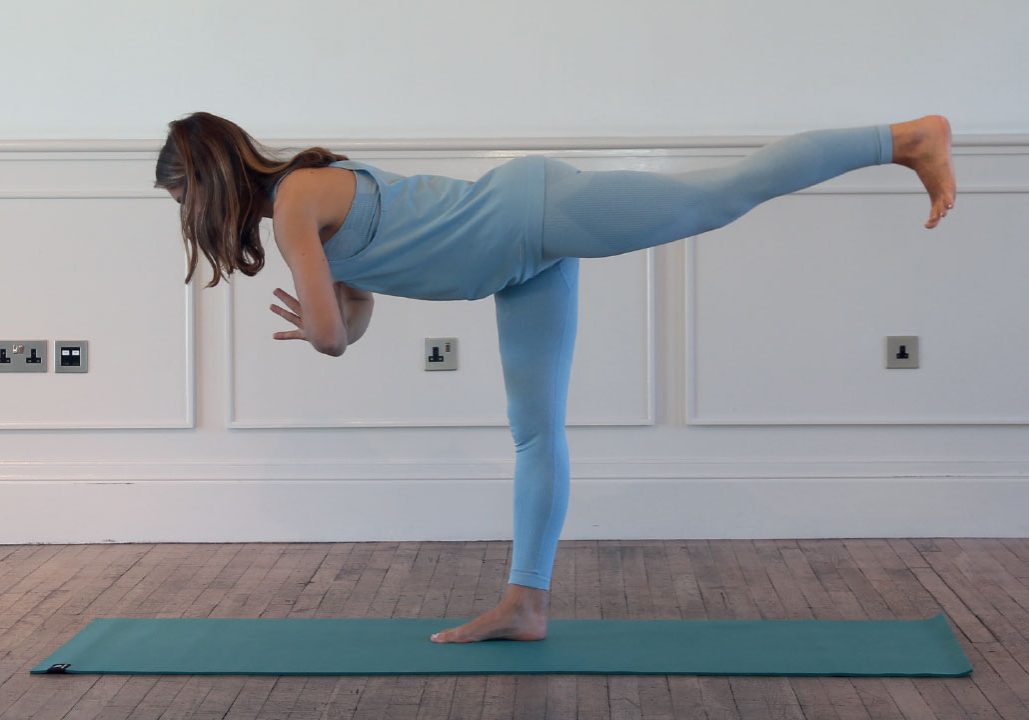
Cultivating Inner Stillness
5 yoga poses for busy and restless minds. By Vanessa Michielon
Reading time: 4 minutes
Have you ever found yourself buried under a mountain of tasks, drowning in the never ending demands of your professional, social or family life? Do you sometimes feel like your thoughts are a chaotic storm, making it challenging to find clarity and true rest?
When our energy is scattered and disconnected, yoga can provide respite from overwhelm and mental fatigue. As some studies show, its efficacy in strengthening our attentional networks and regulating our emotions can even be transformative for people suffering from AHDH .
But which kind of yoga should we practice to calm an easily distractible mind? Before delving into pranayama and meditation — powerful tools, which might require an already sophisticated capacity to maintain sustained attention — asana can be an accessible entry point to quieten our verbal chatter and cultivate concentration.
By offering a good combination of physical engagement and relaxation, and providing internal sensations to track, this limb of yoga can reduce the intensity of our mental distractions and train our brain to focus on the present moment experience.
More specifically, yoga postures challenging our balance in an appropriate way can help us slow down, find solid roots, and re-centre ourselves. Indeed, equilibrium extends far beyond the physical accomplishment of standing still on one leg in a graceful shape: it influences our emotional and mental landscapes too.
The inherent challenge of balancing postures requires a sharp, present-minded focus: pausing for a few breaths holding a set form with a soft but steady drishti (directed gaze) through rooting, lengthening, strengthening and aligning, activates various brain regions responsible for spatial awareness, coordination, and cognitive function, and as a consequence creates a resilient mind, better able to cope with stress and external distractions.
Exactly as in a meditation practice, where we focus our eyes on a candle or fixed point in space, or our attention on the sound of a mantra, the physical effort of the asana replaces external and internal distractions with an object of concentration and contributes to a state where thoughts about the past or the future are significantly reduced.
Additionally, from the point of view of yoga psychology, postures that require us to focus on our dynamic relationship with the earth target Muladhara, the root chakra, associated to our feeling of being safe, supported and solid, something which a hyperactive mind often craves for.
Alongside standing balances, calming and grounding postures, such as seated forward folds or child’s pose, can also help cultivate a sense of stability and connectedness, and can be successfully integrated once excess stress hormones have been discharged and our nervous system has shifted towards a more settled state, generally towards the end of our practice.
Even though the effects of different yoga poses can vary a lot based on our personal experiences, individual history and intentions, the following sequence is designed to make distracting thoughts less intruding and to offer your mind a deeply needed rest from rumination and chaos (these postures can also be introduced in protocols to support ADHD).
As always, it is recommended to approach every invitation with mindfulness and awareness of our unique physical, emotional and psychological landscape, so if anything doesn’t feel right, please adjust or ask for advice from an expert yoga teacher or therapist.
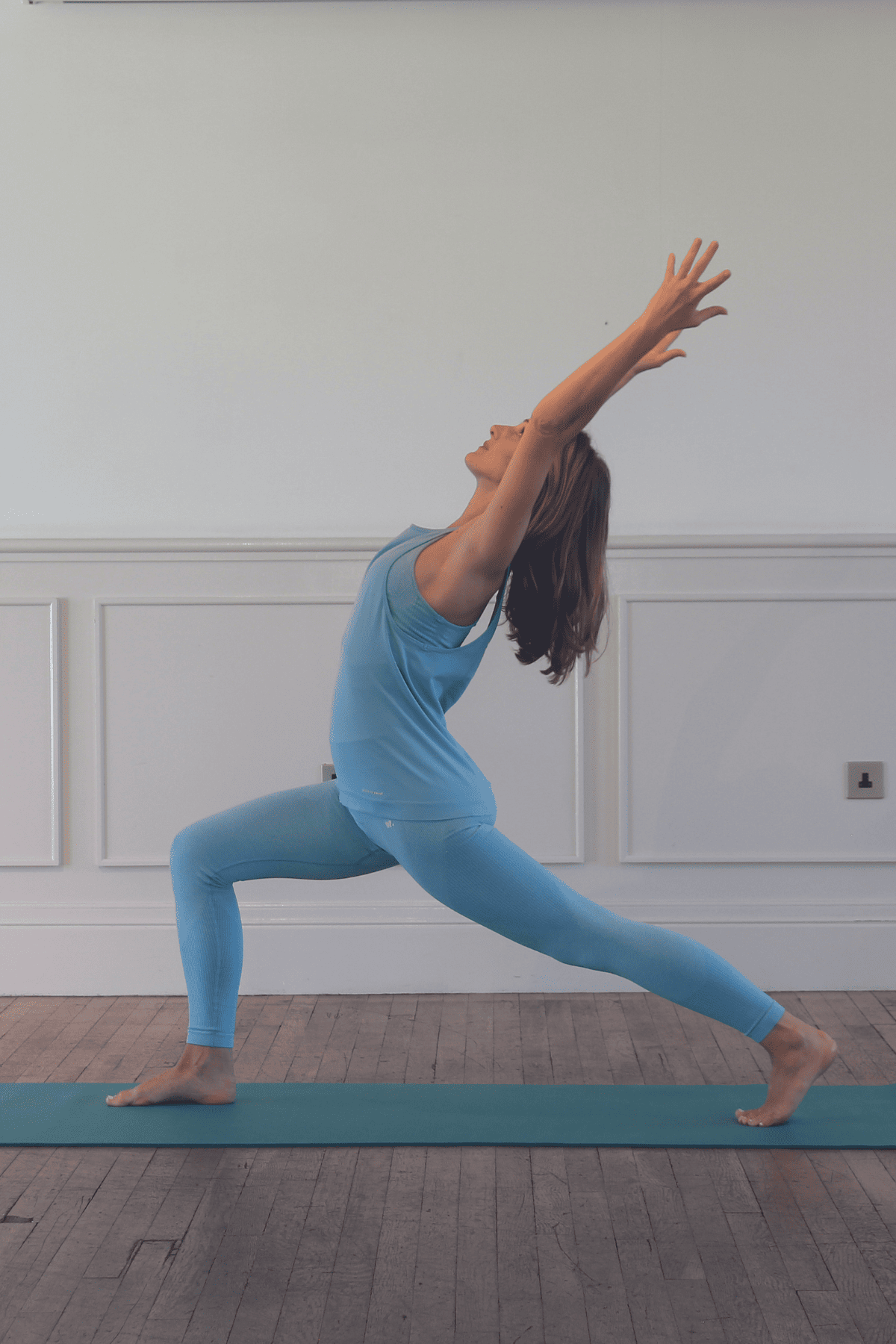
1. Crescent Lunge with Backbend and Gaze Towards the Sky (Anjaneyasana)
Begin in a lunge position, lifting your torso upright, then gently arch your upper back, drawing your chest upward and backward while keeping your lower body grounded.
Benefits: This dynamic pose combines the grounding nature of crescent lunge with the heart-opening quality of a backbend. Psychologically, it encourages a forward-looking perspective, optimism and emotional release. Maintaining your gaze elevated towards a fixed spot above the horizon fosters a sense of clarity, stability and determination.
2. Warrior III (Virabhadrasana III)
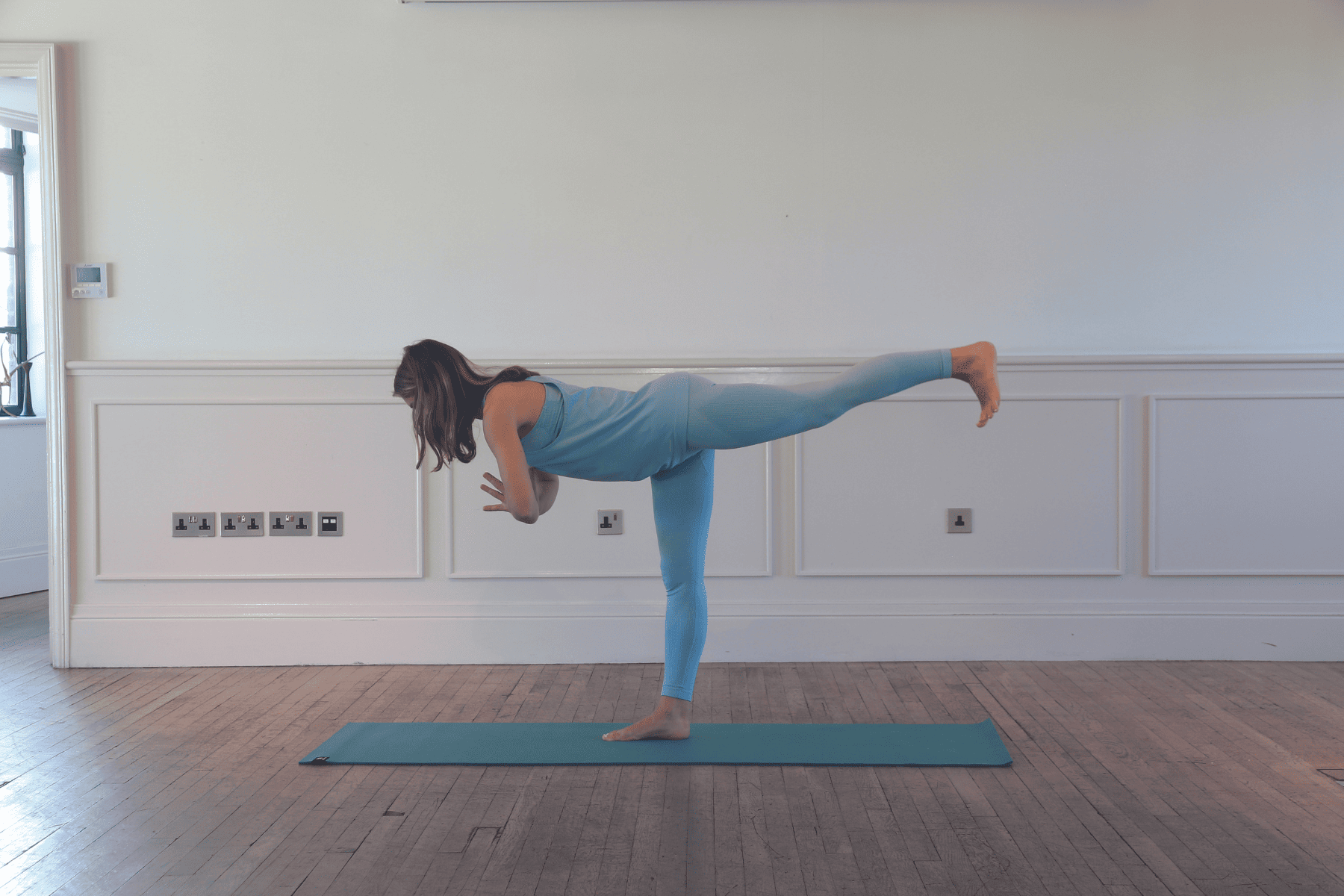
Transition from a standing position to a forward fold, extending one leg straight behind you while keeping your torso parallel to the ground, arms reaching forward or into prayer.
Benefits: Warrior III demands deep concentration and dynamic balance, promoting mental resilience and clarity. Physically challenging, it cultivates a sense of inner strength and empowerment. Whether you are gazing at the floor or a point in front of you, the pose’s forward-reaching aspect encourages a forward-focused mindset, helping you let go of emotional baggage.
3. Extended Hand-to-Big-Toe Pose (Utthita Hasta Padangusthasana)
From a standing position, lift one leg forward, holding the big toe with your hand, then open and lengthen it sideways any amount until you feel stretch in the groin.
Benefits: The grounding nature of the pose, combined with the stretch and the sensation of floating upwards through the crown of your head, can contribute to a feeling of stability, lightness and inner peace, especially when the gaze is steadily directed forward or away from your lifted leg. The act of pressing the floor firmly with the standing foot, and reaching and extending beyond your perceived limits also promotes a sense of openness and expansiveness, both physically and emotionally.
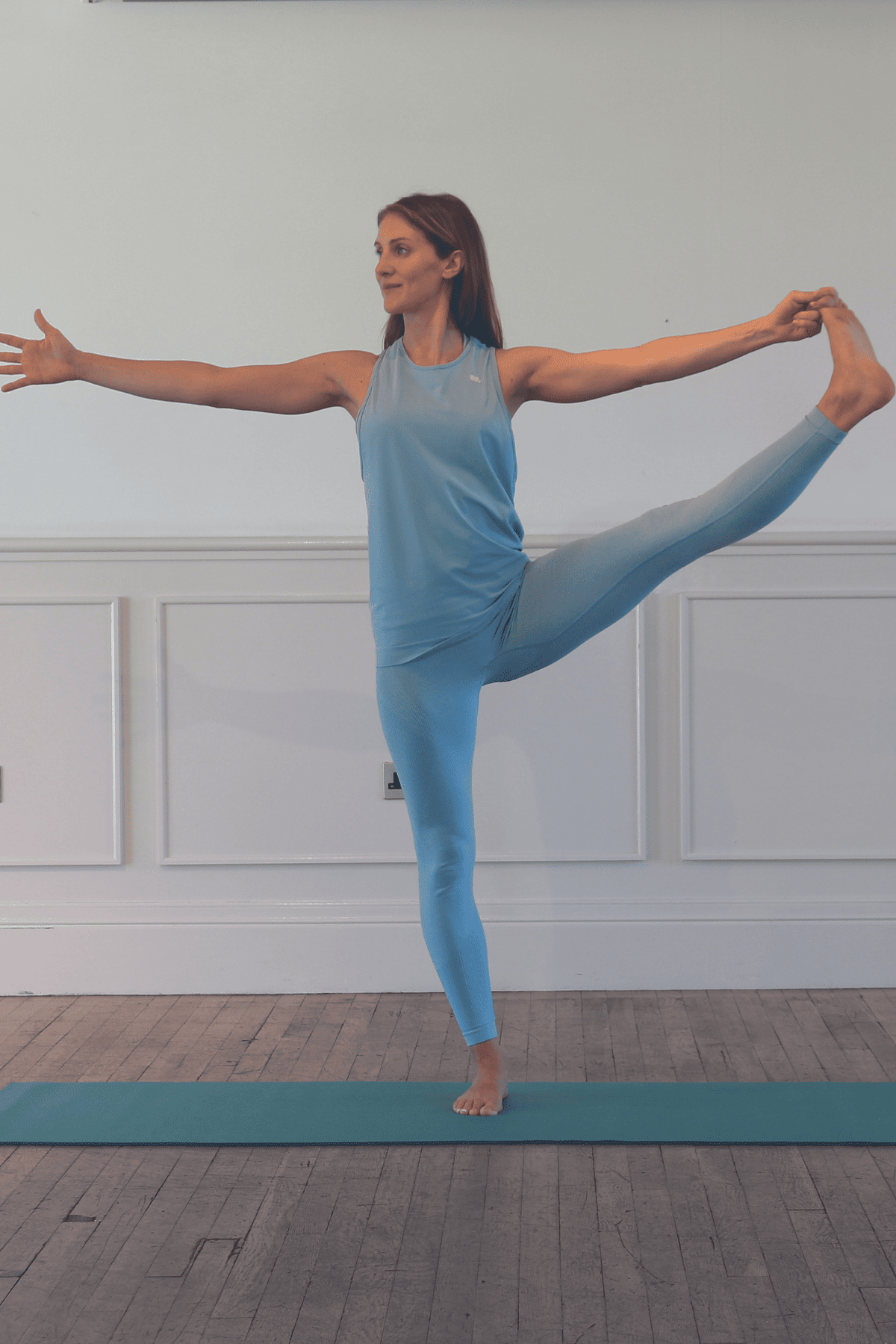
4. Half Moon
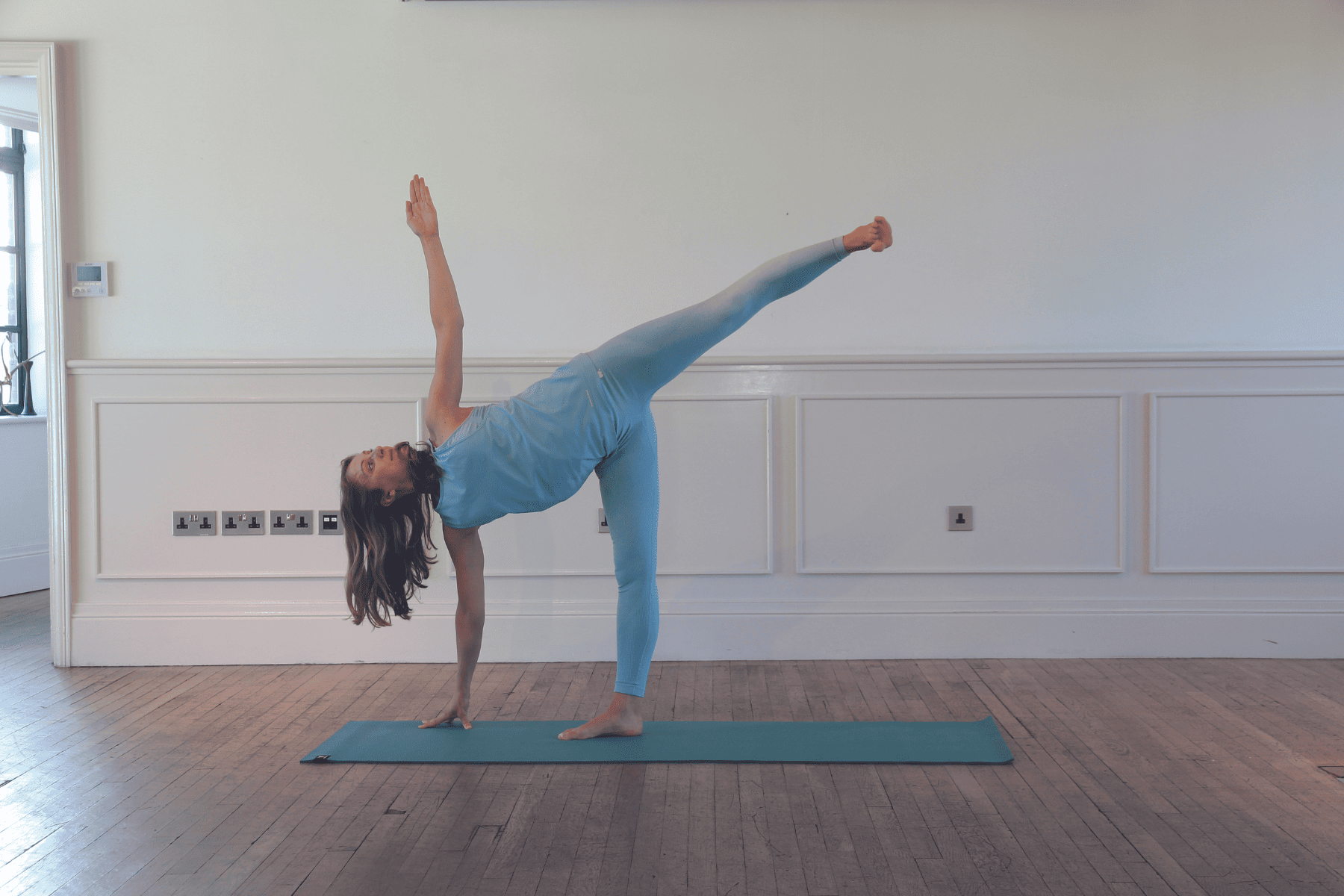
Begin in a standing position, shift your weight onto one leg, and extend the other leg behind you, parallel to the ground, with your hips stacked one on top of the other, while reaching one hand to the floor and the other towards the sky.
Benefits: Balancing on one foot and fingertips while reaching for the sky promotes mental steadiness amidst opposing forces. At the same time, the invitation to open the chest encourages feelings of expansiveness and confidence.
5. Seated Forward Fold (Paschimottanasana)
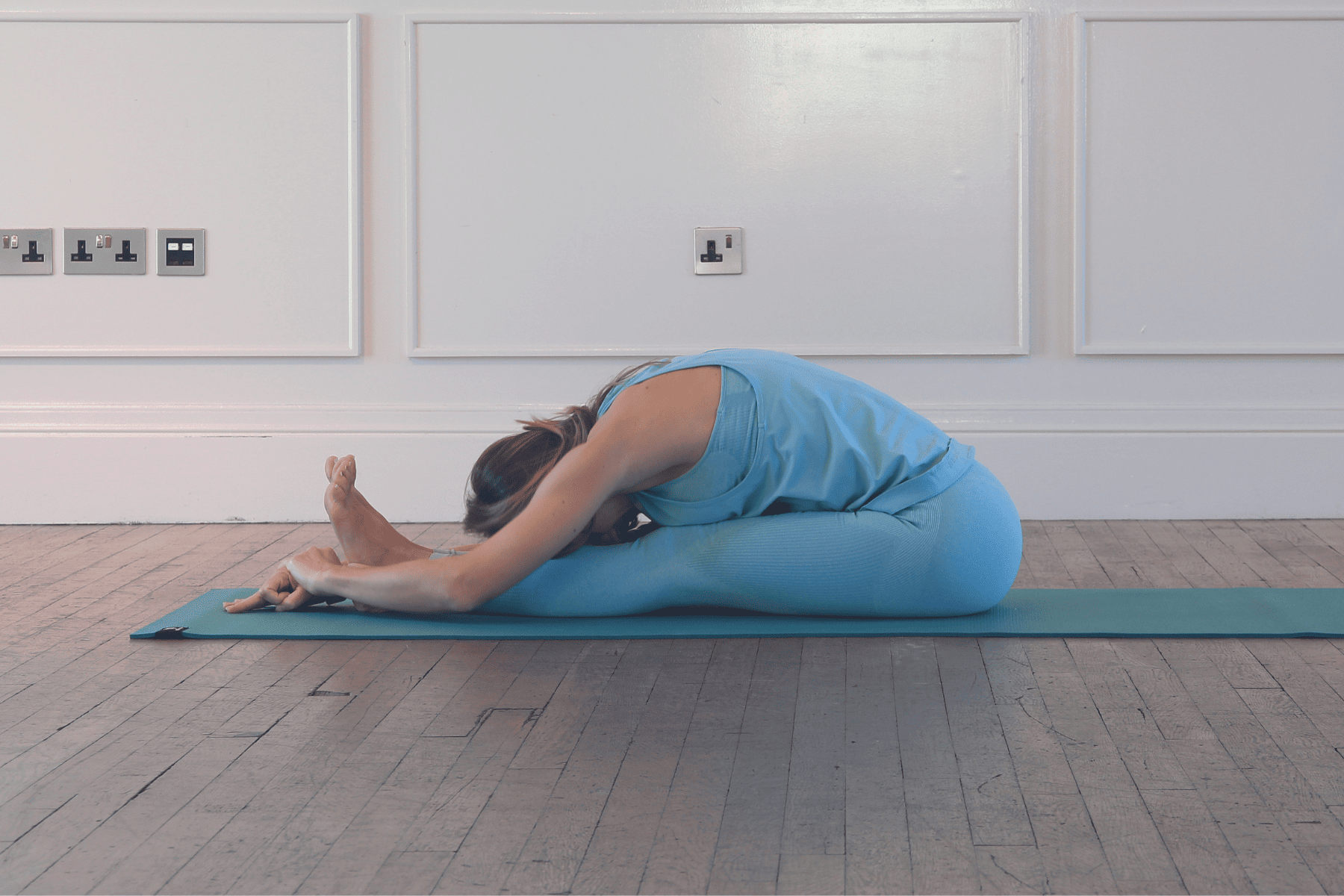
Seated with your legs extended and your spine lengthened, fold forward hingeing from your hips and reach towards your feet, keeping your back as straight as possible until you experience a gentle stretch in your hamstrings. Benefits: Forward bends in general tend to have a calming effect on the nervous system, as the act of folding and dropping the chin towards the chest invites introspection and reduces external distractions. As your spine lengthens, tension in the back, neck and shoulders is also released, contributing to a reduction of hyper-arousal.
Vanessa Michielon, PhD, is a yoga and dance lecturer in higher education and founder of the Transformative Movement Method, empowering people of all walks of life to embrace yoga, Pilates and dance in order to improve physical health and achieve a balanced state of mind. You can find her on Instagram @vanessamichielon and download a free ebook, ‘Release Your body, Ease Your Mind: A Step-By-Step Guide To Stress Relief Through Movement And Breath” at vanessamichielon.com




